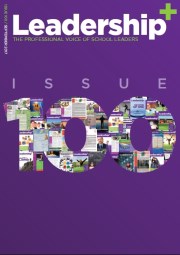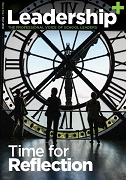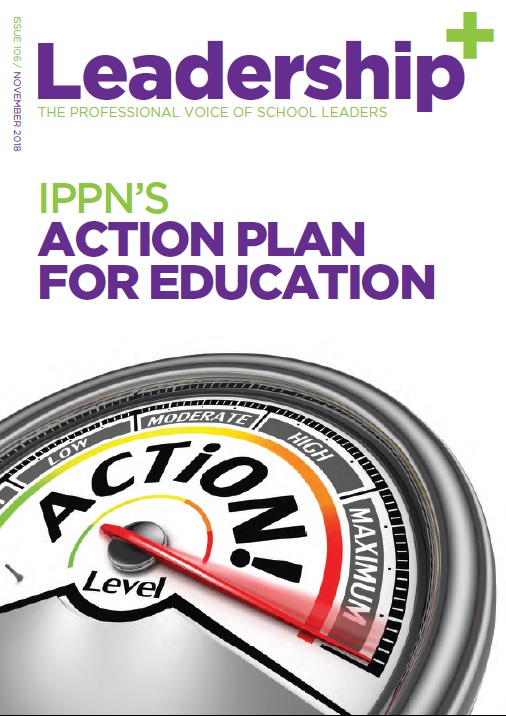Standing firm on substitution
- Published: 11 November 2008
Source : Irish Times
TEACHERS PET: Buoyed up by his success (thus far) over class size, Minister for Education Batt O'Keeffe is digging in as the Budget row over changes to teacher substitution continues.
School mangers and teacher unions have warned pupils could be sent home from January 7th when the new regime kicks in. But Batt seems remarkably unfazed.
The Budget plan to cut substitution cover for teachers on uncertified sick leave and those on official school business at second level has unleashed a storm of protest. But Batt is hanging tough.
Batt's line is that substitution cover for these areas was only introduced in 2003 - and that the world did not fall in before then.
Privately, the Department claims there is a widespread abuse of substitution cover in schools - and don't be too surprised if Batt even mentions this in public.
He told the Dáil last week that spending on the substitution scheme in primary schools has increased from €26 million in 2003 to a projected €84 million this year. It also costs €67 million in secondary and community/ comprehensive schools and no less than €38 million in VEC schools.
All told, that's €189 million - not to mention the €1,789 allowance paid to teachers for supervision and substitution.
Expect more of this stuff to be rolled out by Batt and his team as the pressure builds on the substitution issue.
Some in the Department favour "tweaking'' of the substitution arrangements to allow everyone save face. A solution could easily be found by limiting uncertified sick leave and restricting, rather than eliminating, substitution cover for school business.
But there are few signs that Batt is the mood for anything that smacks of a U-turn.
The Minister is due to meet the INTO and school managers on the issue in the next 10 days. But this issue could continue to cast a shadow until January.
• Marion Coy, the energetic president of the Galway Mayo Institute of Technology (GMIT) showed remarkable prescience in her graduation address to students over two years ago.
Coy told the young graduates about a little known Democratic Senator in the US who might one day change their lives. His name? Barack Obama.
© 2008 The Irish Times
Over 7,000 protest education cuts
- Published: 10 November 2008
Source : Irish Times
JOHN FALLON and SEÁN FLYNN
Mon, Nov 10, 2008
THE CAMPAIGN against the Budget education cuts gained fresh impetus at the weekend as more than 7,000 teachers, parents and pupils attended a protest in Galway.
With more demonstrations planned for the coming weeks, Minister for Education Batt O'Keeffe is to begin a series of meetings with education groups.
Tomorrow he will meet school managers from the Joint Managerial Board and the Irish Vocational Education Association. He will also meet members of the Teachers' Union of Ireland (TUI). Other meetings are planned with the INTO, Eagraíocht na Scoileanna Gaeltachta Teo, the Church of Ireland Board of Education and primary management bodies.
While has been no indication that the Minister is willing to row back on any of the cutbacks, education groups remain optimistic that the new limits on substitution cover will be amended.
The large crowd in Galway braved driving wind and rain to voice their opposition to the education cuts. Similar rallies are planned for around the country in the next month, culminating in a mass protest in Dublin on Saturday, December 6th.
"It's a wonderful turnout in such terrible weather and it just goes to show the depth of feeling among teachers and parents at these cutbacks," said INTO vice-president Máire Ní Chuinneagáin.
Members of the TUI, the Primary Principals' Network, the Catholic Primary Schools Managers Association and the National Parents Council joined their INTO colleagues for the event. They were supported by a host of Opposition politicians.
INTO general secretary John Carr said that every public representative needed to know of the widespread opposition to the cuts.
"We want to tell the Minister and the Government that we will not allow our children to pay for the sins of big bankers and big developers," he said.
INTO president Declan Kelleher said the huge crowd that had turned out displayed the strong ties that exist between parents, teachers and management in primary schools.
"We are united in our opposition to these totally unjustified attacks on an already under-funded primary education service," said Mr Kelleher.
Sr Geraldine Costello, a representative of school boards of management, said the Government should be spending more to address shortfalls in education.
Sr Costello was especially critical of the removal of substitute cover for teachers on uncertified sick leave. "The losers in all of this will be the children. The cutbacks are short-sighted and counter-productive . . ." she said.
© 2008 The Irish Times
Government attempt to cut funding
- Published: 09 November 2008
Source : Sunday Independent
Government attempt to cut funding
At a certain stage of life one should gain an acceptance or stoicism in dealing with decisions one does not agree with.
In some ways, I actually thought I was getting there, but few things in recent years have annoyed me as much as the recently-announced education cuts. They have been sold on the basis that there is a bit of pain for everyone in this budget so teachers, who have cried wolf at times in the past, should shut up and get on with it.
The guiding principle behind any budgetary cutbacks should be that they protect the weak. These do exactly the opposite, no matter what the minister says and at this stage I very much doubt if Minister O'Keeffe actually understands how these things work in reality. Neither do a lot of commentators, but if any interested individual or group wants to see a school in its day-to-day mode, I would be very happy to have them in St Patrick's, Navan.
Another minister, Martin Cullen, went on Newstalk to accuse me of scaremongering. Cullen does not know what he is talking about and therefore should say nothing.
However, I am not surprised at him. Any sports minister -- and I presume he has some interest in sport -- who says we should just concentrate on sports in the Olympics where we have a chance of winning medals has no understanding of individuals striving to do their best. Imagine going to your local football club and telling the players that the club was only going to enter teams where they thought there was a chance of winning. You would be laughed out of town. It is the same for sprinters and long-distance athletes. Just because the Africans are better does not mean our best should not get the opportunity to run at the Olympics.
The practicalities of the increase in the pupil/teacher ratio for me is as follows. Next year, when a teacher retires they won't be replaced. In the likely event that another teacher moves school, I will then be down two.
The foundation classes that have been set up to cater for those struggling in maths and Irish at Leaving Cert level will be the first to go. The same will happen to the English classes which cater for foreign nationals who are having trouble with the language but may be very bright in other areas. These small groups of fewer than ten in each class will have to be amalgamated into pass classes and the reality is that they can't cope in there. These lads need a pass in maths especially to have a chance of an apprenticeship or any ordinary job. Five passes at Leaving Cert is a good achievement for many of these students.
In most cases, they also come from the lower income groups and have little educational ambition. Neither do they have a voice. On top of that, the budget cutbacks rule out the book grant of close to €10,000 which again was targeted at the weakest and most needy in school It meant that they always had books like everyone else. What will they do now if they can't afford books? This is without mentioning the
Alarming age gaps in country's primary schools
- Published: 09 November 2008
Source : Sunday Independent
Alarming age gaps in country's primary schoolsChildren as young as three are now sharing classrooms with eight-year-olds, survey finds
By DANIEL McCONNELL
Sunday November 09 2008
CHILDREN as young as three and as old as eight are sharing the same junior infant classes around the country due to inadequate resources and bad planning, a Sunday Independent survey of primary schools list shows.
The study, which looked at the age profile of every child who started school in September 2007, reveals alarmingly large age gaps at junior infants in counties Cork, Galway, Mayo and some satellite towns around Dublin.
The figures will increase pressure on Education Minister Batt O'Keeffe, who has defended increasing class sizes because of Budget cuts.
Opposition parties and parents welfare groups have said the figures show the "abject failure" of the Government to cope with the emergence of Dublin's commuter belt and to provide proper resources for parents struggling to find a school for their children.
New Department of Education figures show that of 63,253 children who started junior infants in September 2007, some were as young as three, but also that the number who have not been to school by the age of seven and eight has doubled since the previous year.
At the most extreme, Cork county had children aged just three and children as old as eight starting junior infants at the same time, while Galway city and Mayo also recorded starts for three-year-olds. At the other end, Tipperary had the highest number of children not starting school until age seven, despite the legal requirement that children begin no later than six years of age. The figures also reveal that the quality of children's education can depend more on where you live than almost any other factor.
Class sizes in some rural communities are as low as eight or nine, while in urban areas, particularly in Dublin's satellite towns, class sizes peak at over 30. Over 100,000 children are in class sizes of 30 pupils or more.
Fine Gael education spokesman Brian Hayes said the figures show a worrying trend of very young children being mixed in with older children and that such age variances calls into question as to whether small schools in rural areas are viable.
"Children aged three should not be starting school, no matter how small the number."
The Irish National Teachers' Organisation said the figures indicated real difficulties for schools.
"There is a common perception that teachers teach groups of children, similar in age, ability and language ability. This is clearly not the case."
And union general secretary John Carr warned that the situation would worsen due to Budget cuts.
Aine Lynch, of the National Parents Council, said that while class size or age variances on their own aren't of concern, together they can have significant effects on child development.
"It is clear that primary education is the poor relation in Ireland and that needs to change," she said.
- DANIEL McCONNELL
Finnish education is example for Ireland
- Published: 09 November 2008
Source : Sunday Business Post
Irish teachers are looking to Finland - which invests heavily in education - to learn the secrets of why the country keeps topping global league tables on education. Finland has continuously led other countries in OECD reports on education in reading, mathematics and science since the research started in 2000.
Yesterday, an Association of Secondary Teachers of Ireland (ASTI) education conference heard from Olavi Arra, senior education consultant with the Trade Union of Education in Finland.
Arra said it was a surprise to Finland when it first came top of the table for reading literacy in 2000, as teachers felt they were not getting enough resources.
''As we continued to do well, we realised it was not a coincidence and started to examine the ways in which Finland was different to other countries," he said.
One of the main reasons the country is doing so well is its egalitarian approach to education, which means that everyone receives the same basic education, which is free up to university level. It also spends a higher proportion of its gross domestic product (GDP) on education - much higher than in Ireland. The government continued this policy even when the country was coming out of a major economic downturn in the 1990s. Figures for 2005 show it spent 6 per cent of its GDP on education, compared to 4.6 per cent in Ireland.
All teachers in Finland are qualified to masters degree level and are expected to update their professional skills at regular periods.
They are also free to choose their teaching methods and are responsible for developing their own work. However, teaching salaries in Finland are relatively lower than most other countries, especially given that all teachers have masters degrees.
Salary scales in Ireland are between €33,300 and €63,000,but most Finnish teachers are on lower pay. However, an ASTI spokeswoman said that any salary comparison should factor in cost of living and the social and economic model in operation.
''In Finland, there is more investment in public and social welfare services. For example, teachers do not pay for healthcare services, such as GP visits. All citizens receive medical insurance, pre-school education is free and parents only pay a contribution towards childcare costs," she said.
The most recent OECD publication, Education at a Glance 2008, shows that Irish teachers teach more hours than their Finnish counterparts - 568 hours in Finland compared to 735 in Ireland; Ireland is also well above the OECD average in this regard.
Following an increase in class sizes in last month's budget, the impact of large class sizes on the education of our children has been a major issue in Ireland.
But small class sizes have not been the reason behind Finland's success.
''Because class size is not uniform across the country, it hasn't been the explanation behind the good results of Finland," said Arra.
''If you are looking for the most important things behind the success, teachers' pedagogic freedom, masters-level education, good teacher training and willingness to develop are top of the list," he said.
''Society trusts teachers and schools - there are no annual national tests or inspector system. In Helsinki, the city supports schools with positive discrimination, which means that schools in areas with no problems give money from their budgets to schools with challenging social surroundings.
''Class size varies in different parts of the country, but results are good everywhere."
The Finnish government has promised to use the money saved in the education sector from falling population numbers to reduce class sizes.
The ASTI conference, which was entitled Securing the Future for our Young People, also heard from Dr Rory O'Donnell, director of the National Economic and Social Council (NESC).
He explained an NESC report, which was published in the summer, which stated that Ireland's educational system needed to innovate and change in profound ways if it was to meet the higher demands of the general public, the workforce, and employers.
''As we enter a period of rapid volatile change, we are looking at how secure the future of education is in this country. We want to hear what they are doing in Finland as they perform so well in all the statistical studies," said Moira Leydon, ASTI assistant general secretary.
ASTI general secretary John White said that everyone recognised there was a crisis in the government's finances, but slashing public services was not the way forward, particularly as the OECD recently stated that, by international standards, Ireland's expenditure on public services was low.
''Far better to follow the Nordic model that our Finnish colleague is lucky to live under, whereby a competitive economy is complemented by good social services and fair taxation," he said.
''The education service in Ireland is not bloated, despite what the right-wing economists may say, and solving the crisis in public finances by creating a crisis in schools is not the way forward."



















































